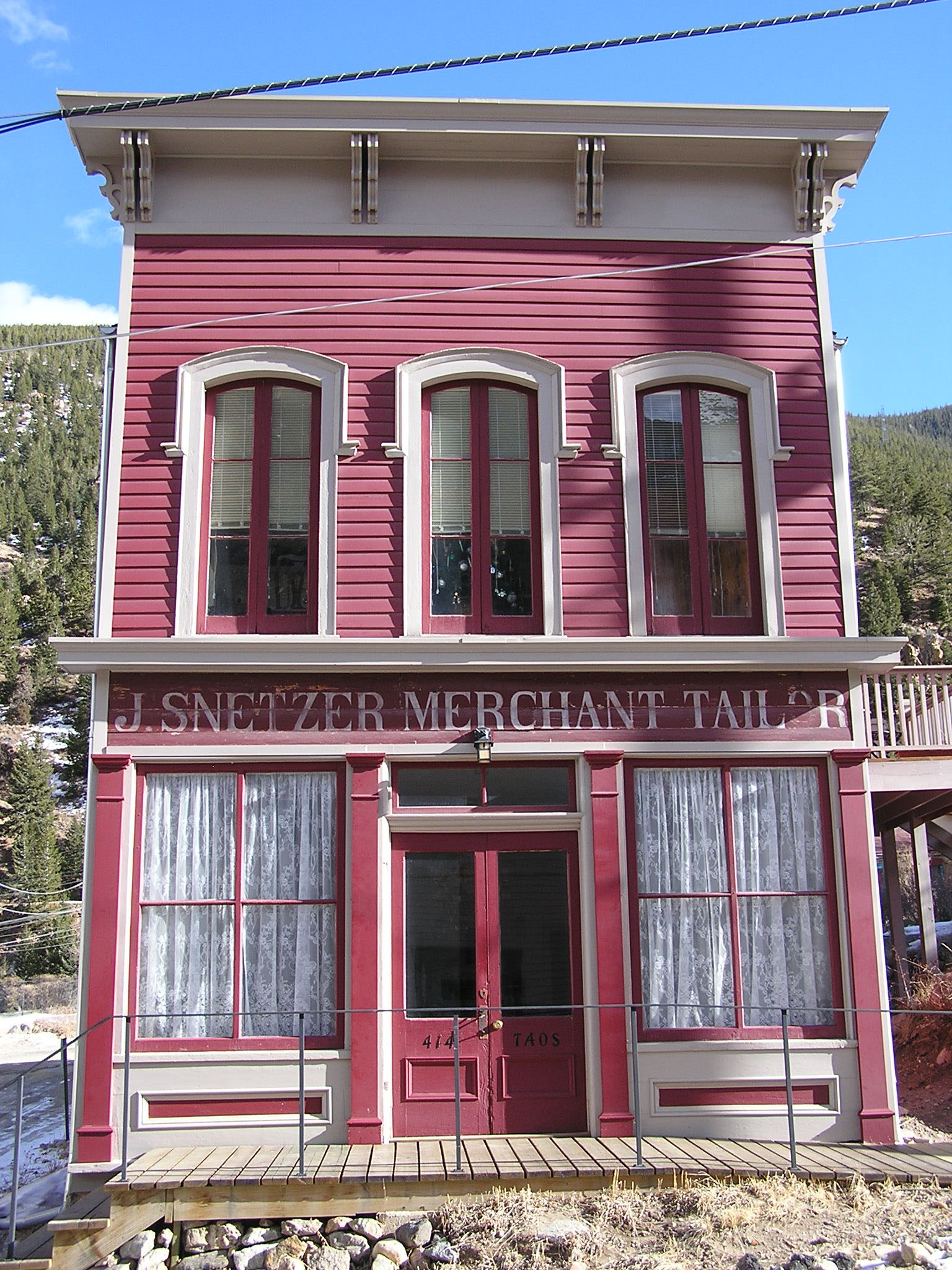
Grant News
Georgetown's "How Do You Do" Lady
Hazel McAdams may have saved a Georgetown landmark by encasing it in stucco. The former school superintendent and owner of the nearby Hotel de Paris bought the historic Snetzer Building in 1926 and used it as an antique shop.
The false front commercial building, built in 1869 by tailor Jacob Snetzer, once evoked Georgetown’s glory days as the silver queen of Colorado’s mining towns, but its uninsulated walls couldn’t keep out the severe mountain weather. Sometime around 1955, she had workers stucco its entire exterior. At the time, lovers of Victorian architecture decried the apparent loss of an iconic Georgetown storefront. Today, residents and historians understand that her fifties makeover actually protected most of the building’s original materials.
But Hazel’s accidental preservation technique wasn’t her only contribution to the landmark’s eventual restoration, say longtime Georgetown residents Matt and Cynthia Skeen. The Skeens, representing the Grace Episcopal Church Foundation, helped administer a multiphase preservation project that returned the Snetzer Building to its 1869 grandeur. Their church, a Victorian gem in its own right, occupies the lot next door. Rich in mining town charm, Grace Episcopal has just about everything it needs to serve its small congregation, including the oldest operating pipe organ in Colorado and a unique free-standing bell tower.
“The one thing it doesn’t have,” jokes Matt, “is bathrooms.”
By purchasing and restoring the fully plumbed Snetzer Building, Grace Episcopal provided its parishioners with convenient facilities, gave Georgetown residents another place to hold community events, and added to the downtown historic district’s charm. But none of it would have been possible without some indirect help from Hazel McAdams.
“Hazel willed the building to friends in Texas after her death,” explains Matt. “And she left a lot of her antiques in the store. When the new owners decided to sell the building, they wanted to sell the antiques as well. Our church was the only buyer who was interested in all that old stuff.”
Some of that old stuff came from McAdams’s other property, the Hotel de Paris. The National Society of the Colonial Dames of America, which owns and operates the hotel as a museum, was interested in acquiring some of the artifacts. They helped buy the Snetzer Building and received some of the hotel’s original treasures in return. The church recouped some of its own investment by selling most of the remaining items. A few of the best pieces, including the chandeliers, add a touch of nineteenth-century authenticity to the Snetzer Building’s interior.
Grace Episcopal received two State Historical Fund grants to assess the building’s condition and restore its exterior and quintessentially western false front façade. Gary Long and Kathy Hoeft served as the project’s architects and Tim McDonough—owner of Silver Plume Home Services—was the contractor. Their adherence to preservation standards and expert craftsmanship caught the attention of architects and historians across the state. The late Ron Neely, a well-respected local preservationist and multi-term president of Historic Georgetown, Inc., was known to brag about their project around town. And last February, Grace Episcopal Church received the coveted Stephen H. Hart Award from the Colorado Historical Society for excellence in historic preservation. That award reflected their work on the old store as well as Fund-supported work on the church.
Walking down Georgetown’s Taos Street today, one cannot fail to imagine proper Victorian men and women strolling past the Snetzer shop on their way to church. Hazel McAdams herself, though she lived in a later time, was known to insist on old-fashioned social graces. “Schoolchildren used to greet her on the street with a hardy ‘Hello!’” says Matt. She responded by saying, “I’m not a ‘hello’ gal. I’m a ‘how do you do’ lady.” Thanks to work done by Grace Episcopal Church and other preservationists, Georgetown is too.

